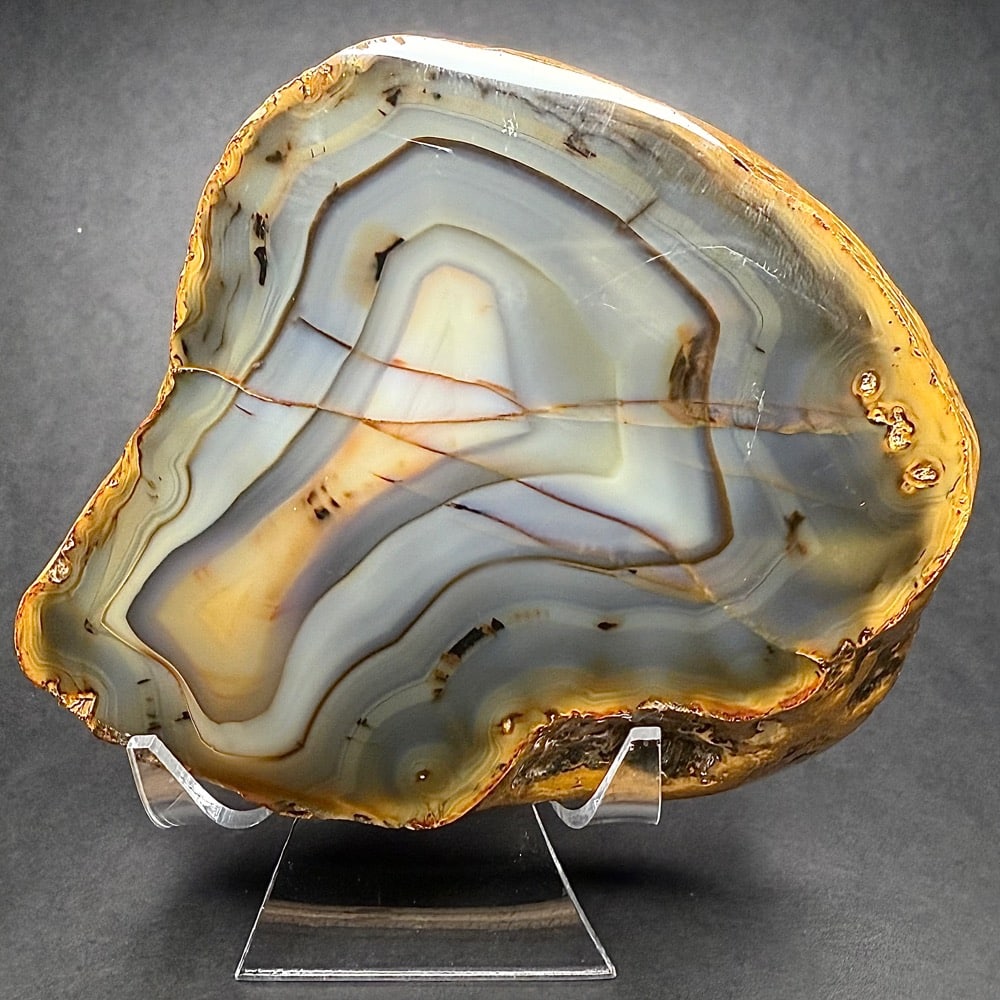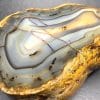Description
Jequitinhonha Agate is a very rare form of Brazilian Agate that comes from a creek in Brazil with a known anomaly of naturally polishing stones! It is believed this natural polishing comes from microscopic diamonds within the creek! The skin of these agates has a 100% natural glossy finish! The agate itself tends to be very hard and takes a flawless mirror polish! This isn’t one you are likely to see anywhere else, due to its insane rarity!








